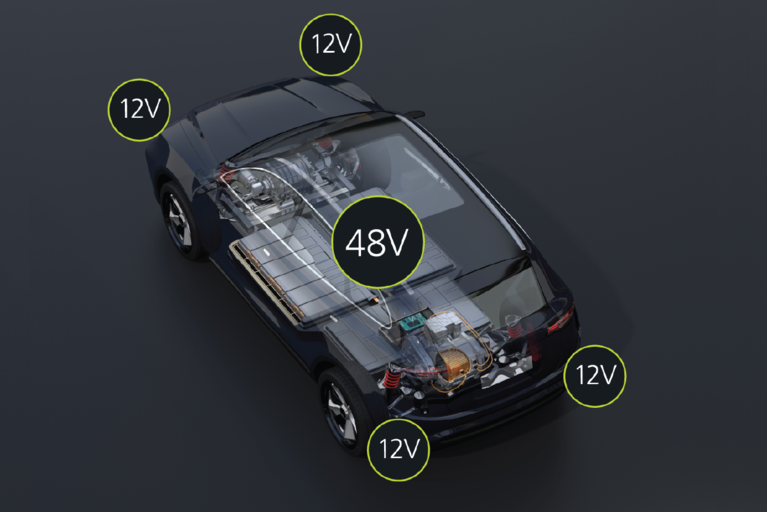
高密度功率模組簡化和縮小電動汽車電源系統設計
Vicor 電源模組為電動汽車應用注入創新。瞭解三款汽車級新產品將如何徹底改變未來的電源設計
VTM 和 BCM 等 Vicor 器件使用正弦振幅轉換器拓撲(SAC)提供隔離和變壓功能,您可以將這些功能放在需要的地方,將其與穩壓分開。
此外,SAC 還可實現靈活的設計方法:基於該拓撲的器件可單獨使用,也可以串聯或並聯,提供更高的輸出電流或電壓。
圖 1:VTM 的串聯和並聯
考慮以下示例:在 36V 到 75V 的輸入電壓負載下,需要一款 200V 的穩壓電軌。 為了實現這一點,使用四個 K 因數均為 1 的 50V 輸出電壓 SAC 模組(VTM)M1、M2、M3 和 M4。K 因數為 1 時,輸入輸出電壓相等。輸出電流 IOUT 是所有 SAC 模組通用的電流。在這一執行過程中,一定要使一個組中的所有 SAC 模組同步啟動所有這些模組,才能使最終轉換器準確無誤地工作。
對於 N 個 SAC 而言,總輸出電壓為串聯輸出時所有所連 SAC 的輸出電壓之和,如下所示。
其中 Total_VOUT =串聯正弦轉換器的總輸出電壓。N 是 SAC 模組數。KN 和 VOUTN 為各串聯 SAC 的變壓因數和輸出電壓,VIN 為 SAC 的輸入電壓,等於穩壓器模組的輸出電壓,VINS 為施加在穩壓器輸入端的非穩壓輸入電壓電源的電壓。
最終系統如下圖所示:
圖 2:採用串聯 VTM 的 50V 輸入、200V 輸出電源鏈
相關內容
產品概覽:PRM 和 VTM
應用筆記: PRM 和 VTM 並行陣列工作
高密度功率模組簡化和縮小電動汽車電源系統設計
Vicor 電源模組為電動汽車應用注入創新。瞭解三款汽車級新產品將如何徹底改變未來的電源設計
高密度電源模組推動主動懸架技術日趨成熟
主動懸掛系統已從 20 世紀 90 年代的測試版發展成為今天的 48V 驅動系統。瞭解電源模組對電源系統設計的影響
基於 MHz 開關頻率的器件助力實現 DC-DC 轉換器和 EMI 濾波器的小型化
想像一下,使用 DC-DC 轉換器解決方案來利用高頻開關的優勢,而不會發生傳統解決方案的缺點
採用 48V 區域架構,打造面向未來的先進電動汽車
隨著原始設備製造商(OEM)採用 48V 電源架構,他們正努力優化其電源系統設計。 Vicor 的高功率密度模組可為 48V 區域架構提供峰值效率




